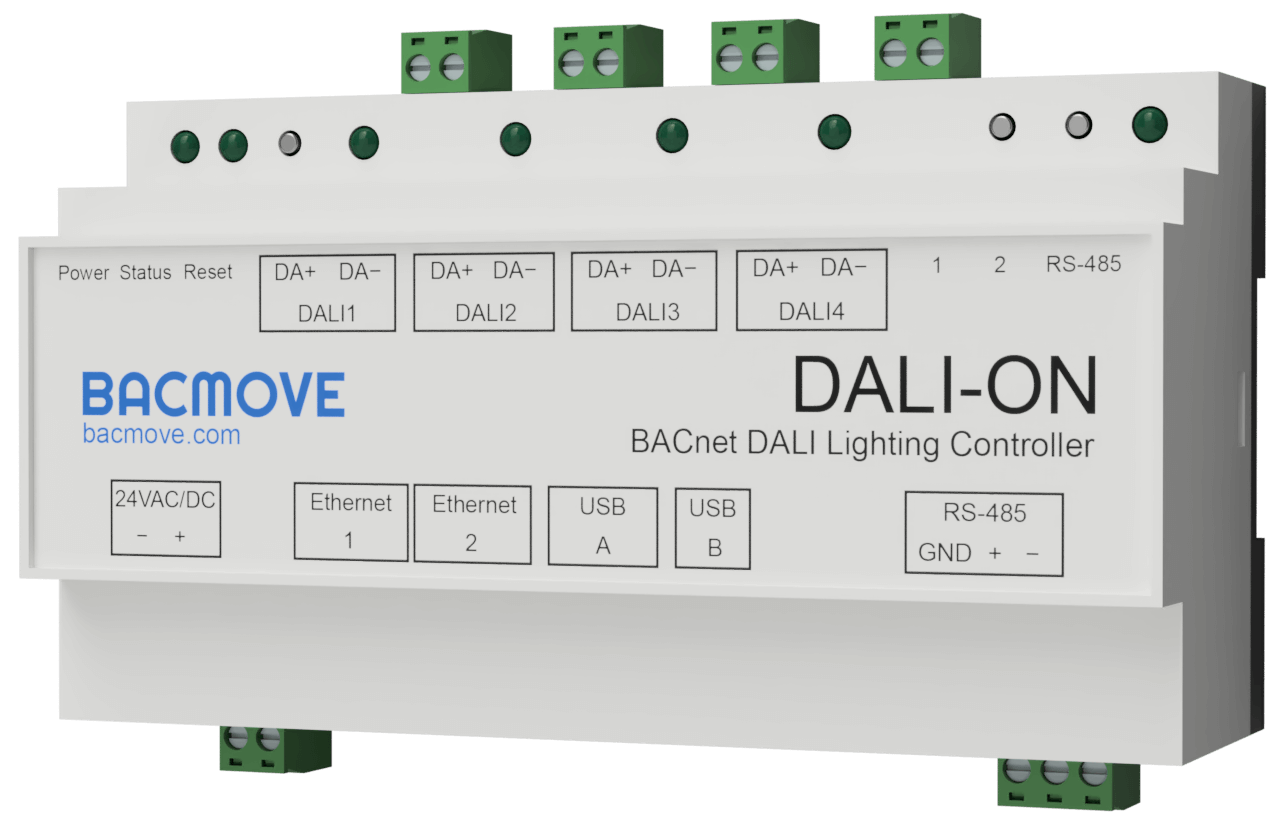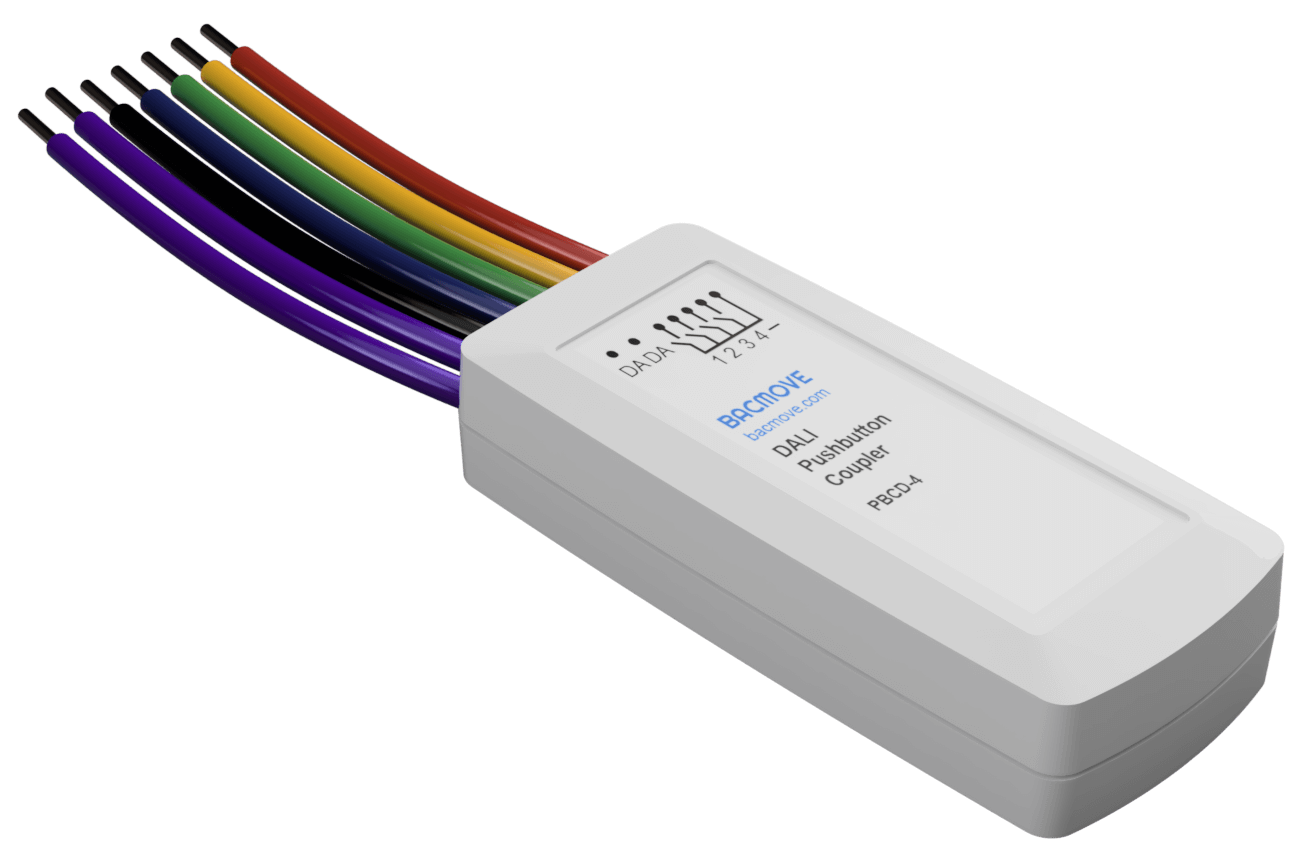Key Takeaways
- DALI is a digital protocol with individual addressing, feedback, and scene control, much more capable than 0–10V.
- Each DALI bus supports up to 64 control gear and 64 input devices on the same two-wire, polarity-free line.
- Address assignment uses a binary search on 24-bit random addresses, no physical access needed.
- DALI works on a controller to device model; all logic comes from an application controller.
- Group and scene functions allow scalable, flexible control without rewiring.
- DALI-2 improves interoperability across brands, especially for switches and sensors.
- Strict timing rules and one talker architecture ensure DALI bus stability and collision free communication.
Basic Understanding
What is DALI?
DALI (Digital Addressable Lighting Interface) is a standardized digital protocol for controlling lighting. It allows each light or device to be individually addressed, grouped, or assigned scenes. DALI supports two-way communication, enabling real time feedback, diagnostics, and precise control over brightness and behavior. It is widely used in building automation systems for scalable, flexible lighting control.
What are the main differences between DALI and traditional 0-10V analog dimming?
DALI is a digital protocol where each device can be addressed individually or in groups, and can send back status and diagnostic info. 0-10V is analog, unidirectional, and lacks any feedback, everything is based on voltage levels and assumptions. DALI also supports scenes and fade rates. For reliable, scalable control, especially in larger or networked systems, DALI is far more versatile. Also, wiring for DALI is not polarity sensitive, which simplifies installation.
How many DALI devices can be connected on a single DALI line?
According to the DALI standard, a single bus can support up to 64 short-addressable control gear and up to 64 control devices (e.g., switches or sensors) in DALI-2. All devices share the same two-wire bus, with no need for separate signal and power lines. If more than 64 outputs are needed, multiple DALI lines or gateways must be used.
What is the voltage and current specification for a DALI bus?
The DALI bus operates between 9.5V and 22.5V, with 16V nominal. The current must not exceed 250 mA per line. Power supplies must be compliant with IEC 62386-101 and include current limiting and short-circuit protection. Multiple supplies can be used in parallel if they coordinate current-limiting correctly, but it is generally safer to use one well-sized unit.
How does DALI handle addressing for individual luminaires?
Each control gear is given a unique short address from 0 to 63, either manually or using random addressing during commissioning. The standard defines a search algorithm using 24-bit random addresses to isolate devices during setup. After assignment, the random address is discarded and only the short address is used. This method avoids physical access or DIP switches and allows full software-based commissioning.
What are the standard commands used for dimming in DALI?
DALI supports a variety of commands like RECALL MAX LEVEL, RECALL MIN LEVEL, UP, DOWN, OFF, and GOTO SCENE. It also allows direct level commands (0-254), with 255 representing “MASK” (ignore). Fading time and rate are programmable per device, allowing for smooth transitions. Commands are broadcast, group-targeted, or sent to a specific address. The behavior is deterministic, devices act the same way each time based on internal settings.
Advanced Concepts
Can DALI devices communicate peer-to-peer, or is the communication always master-slave?
DALI follows a controller-to-device model, no true peer-to-peer. Only one device may transmit at a time. Sensors or switches (input devices) report to the application controller, which makes logic decisions and sends out commands. The protocol ensures one talker at a time and uses collision avoidance by enforcing turnaround times defined in the standard. This makes DALI robust for multi-device environments but requires a controller to coordinate logic.
What is the purpose of groups in DALI, and how many groups can a device belong to?
Groups are used to send a single command to multiple devices at once. Each device can belong to up to 16 groups, defined via a 16-bit mask in memory. Grouping allows logical organization without physical rewiring, and scenes can be layered on top of groups for even more flexible control. Groups simplify large installations, especially in open-plan areas or where behavior needs to be adjusted often. Group commands are lower overhead than sending multiple short-address commands.
What are DALI scenes, and how are they different from groups?
Scenes store preset light levels per device, not as a collective setting like groups. Each control gear can store up to 16 scene levels (scene 0 to 15). When a scene command is received, the device recalls the level assigned to that scene number. Scenes allow dynamic lighting based on usage; presentation mode, cleaning, night mode, etc.
What mechanisms are used in DALI to ensure message delivery and reliability?
DALI ensures reliable message delivery primarily through strict timing rules and controlled bus access, as defined in IEC 62386. Only one device is allowed to transmit at a time. To prevent collisions, the standard defines minimum idle times between frames, enforced turn-around delays before a device may respond, and timing tolerances for start bit and bit durations. Devices are required to monitor the bus state before transmission, and discard any transmission attempt if the bus is not idle. These timing constraints and single-talker architecture ensure the DALI bus remains deterministic and collision-free, even in systems with many devices.
How does DALI-2 improve upon the original DALI standard?
DALI-2 introduced multi-vendor interoperability for input devices and application controllers, which were previously proprietary. The protocol was split into parts: 101 (system), 102 (control gear), and 103 (control devices). DALI-2 also standardized timing, command responses, and how control devices behave, leading to more predictable and testable systems. In short, DALI-2 closed gaps left open in the original DALI spec. and is much more suitable for complex or multi-vendor environments.
Commissioning and Configuration
How are DALI short addresses assigned during commissioning?
DALI short address assignment is based on a discovery process that uses a binary search algorithm over the 24-bit random addresses stored in each device, as specified in IEC 62386. The application controller sends a series of SEARCHADDR and COMPARE commands to isolate one device among all unaddressed devices. By adjusting the search address range bit by bit, the controller narrows down to a single device. Once a unique device is found, it is assigned a short address using the PROGRAM SHORT ADDRESS command and then masked out from the search. This process repeats until all devices on the line are assigned a unique address between 0 and 63.
What are the tools or software commonly used for commissioning DALI networks?
It depends on the controller vendor, each have their own software. Software typically support address assignment, group and scene configuration, and diagnostics.
What is the role of a DALI application controller in a lighting system?
The application controller is responsible for interpreting input device signals (switches, sensors) and sending commands to control gear. It holds the logic for occupancy, daylight harvesting, time-based events. Without an application controller, the DALI bus is passive, devices won’t react unless told. Some DALI-2 input devices can send event messages, but you still need an application controller to process them into actions.
Can you explain the difference between broadcast, group, and short-address commands in DALI?
Broadcast commands go to all devices, regardless of address. Group commands go to any device that has the matching group bit set. Short-address commands target exactly one device by its assigned address. Scene and other commands can use any of the three addressing modes, depending on design goals.
How is device failure detected or diagnosed in a DALI system?
Standardized queries like QUERY LAMP FAILURE, QUERY DEVICE FAILURE, and QUERY STATUS are used to detect issues. Application controllers can log these or raise alarms. This simplifies maintenance and reduces downtime.
Integration and Interoperability
What are the key considerations when integrating DALI with BACnet?
DALI communication is slow and timing-sensitive, while BACnet/IP runs on faster networks and expects quick responses. To bridge this gap, the gateway must cache DALI feedback and command states. This caching allows BACnet requests to be answered instantly using the last known DALI data, without waiting for a new DALI bus transaction. It also prevents excessive polling from flooding the DALI line, which could disrupt lighting behavior. Proper object mapping, command queuing, and rate limiting are essential to maintain performance and reliability on both sides.
How does DALI-2 standardize interoperability of input devices like switches or sensors?
DALI-2 defines how input devices report events using standardized instance types (e.g., pushbutton, occupancy sensor, light sensor). This allows any compliant application controller to interpret events from any vendor’s input device. It eliminates the need for custom drivers or proprietary decoding. This makes multi-vendor setups practical and maintainable.
Is it possible to use multiple power supplies on a single DALI line?
Yes, but you must ensure the total current does not exceed 250 mA. Also, supplies must be DALI-compliant and isolated to avoid interference. Using multiple supplies is rare and usually done only when long distances or current load justify it. Most systems are safer and more stable with a single current limited power supply.
How is backward compatibility handled between DALI and DALI-2 devices?
DALI-2 controllers can control older DALI gear, but the reverse isn’t true. DALI control gear (ballasts) generally respond to standard commands regardless of version. However, input devices (like switches or sensors) only work if both controller and device support DALI-2. In mixed systems, logic should remain in the DALI-2 controller for best results.


